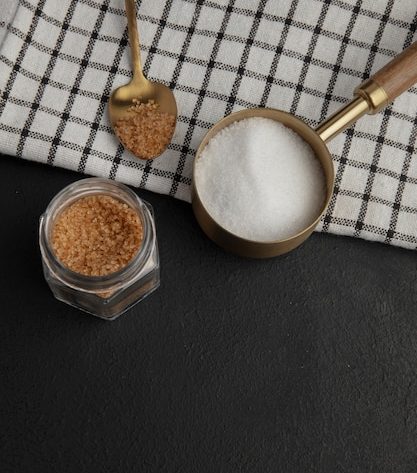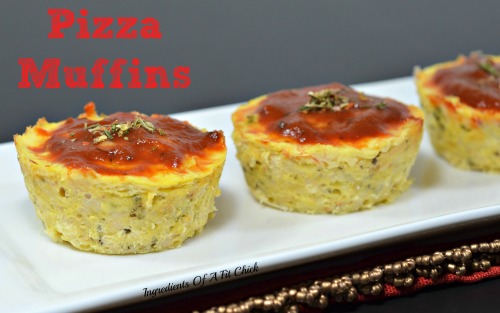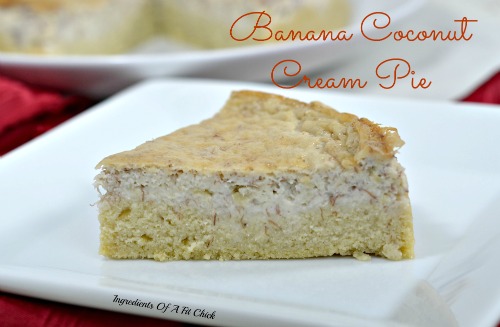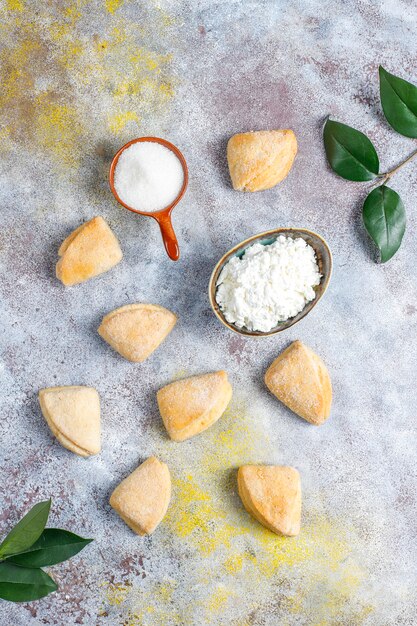Cornstarch vs Baking Powder A Comprehensive Comparison
In the culinary world, various ingredients can serve multiple purposes, enhancing both the texture and flavor of dishes. Among these versatile options, two prominent contenders often find themselves at the forefront of discussions. Understanding their unique properties and applications can significantly elevate your cooking experience, ensuring optimal results in both sweet and savory recipes.
Each of these substances plays a distinct role in the kitchen, influencing everything from the consistency of sauces to the fluffiness of baked goods. While one may act as a thickening agent, the other serves primarily as a leavening agent. Choosing the right element for a particular task can make a notable difference in the outcome, transforming everyday meals into culinary masterpieces.
As home chefs and baking enthusiasts navigate their recipes, the decision between these two components can be pivotal. By exploring their functionalities, benefits, and ideal usage scenarios, culinary creators can make informed choices that align with their desired results. Delve deeper into the characteristics of these ingredients to unlock new possibilities in your cooking adventures.
Cornstarch: What It Is and Uses
This versatile ingredient is a fine, white powder derived from the endosperm of corn kernels. It serves numerous purposes in cooking and baking, making it an essential item in many kitchens. Its unique properties contribute to textures and consistencies across various dishes.
The applications of this ingredient are diverse, enhancing both sweet and savory recipes. Here are some common uses:
- Thickening Agent: Often employed to thicken sauces, gravies, and soups, providing a smooth texture without altering the flavor.
- Stabilizer: Helps maintain the structure of certain desserts, preventing separation in cream-based recipes.
- Baking Component: Can be mixed with flour to create a lighter, fluffier texture in baked goods.
- Coating for Frying: Used as a coating for meats and vegetables, producing a crispy layer when fried.
Its ability to absorb moisture makes it useful in various culinary applications, ensuring that dishes have the desired consistency and mouthfeel. Overall, this fine powder is an indispensable tool for both home cooks and professional chefs alike.
Understanding Baking Powder Functionality
Exploring the role of leavening agents reveals their critical position in various culinary creations. These substances help achieve the desired rise and texture in baked goods, fundamentally altering the final result. Their unique chemical compositions play a vital role in the interactions that lead to leavening, ensuring that pastries, cakes, and breads achieve the ideal fluffiness and structure.
Mechanism of Action
The key to every successful leavening agent lies in its ability to produce gas. When combined with moisture and heat, these components undergo a chemical reaction that generates carbon dioxide. This gas creates bubbles within the batter or dough, leading to expansion. The result is a light and airy product, transforming dense mixtures into delightful treats.
Types and Variations
There are different variations of leaveners available, each with its specific characteristics and applications. Some rely on acid-base reactions while others utilize moisture and heat. Understanding these distinctions allows for better choices in recipes, ensuring optimal results based on individual needs. Utilizing the right agent based on its properties can significantly enhance both flavor and texture in baked creations.
Key Differences Between Two Ingredients
Understanding the distinct characteristics of two commonly used culinary components can greatly influence the outcome of your recipes. Each serves a unique purpose in cooking and baking, contributing various properties such as texture, moisture retention, and leavening. Knowing how to correctly implement each can enhance your culinary endeavors.
Purpose and Functionality
These ingredients fulfill different roles in food preparation. The first is primarily utilized as a thickening agent, ideal for achieving a smooth consistency in sauces and soups. On the other hand, the second acts as a leavening agent, responsible for creating lightness and aeration in baked goods. Recognizing their individual functionalities is crucial for achieving the desired results in your dishes.
Composition and Reaction
The composition of these two items differs significantly, affecting their behavior when heated or combined with other ingredients. The first is derived from grains, providing a fine, powdery texture that absorbs moisture. Conversely, the second consists of a combination of acidic and alkaline components, which produce carbon dioxide when mixed with liquids and subjected to heat. This reaction is fundamental to the rising process in various baked products.
When to Use Cornstarch in Recipes
This ingredient serves various purposes in cooking and baking, enhancing the texture and consistency of dishes. It acts as a thickening agent, making liquids more viscous for sauces, soups, and gravies. It is particularly beneficial when a glossy finish is desired, providing a smooth mouthfeel in desserts and dressings.
When preparing sauces or gravies, incorporating this ingredient can help achieve the right consistency without altering the flavor significantly. Its ability to thicken mixtures quickly makes it ideal for recipes that require immediate results, as it activates upon heating.
In baking, this component can also be added to certain mixtures to yield a lighter, fluffier texture. It is often combined with flour to improve the overall crumb structure of cakes and cookies. Additionally, it can prevent clumping in powdered sugar and other dry ingredients.
Furthermore, this ingredient is an excellent choice for gluten-free recipes, allowing those with dietary restrictions to enjoy a variety of dishes without compromising on taste or texture.
Common Dishes Featuring Baking Powder
Leavening agents play a crucial role in creating light and fluffy textures in a variety of culinary delights. When it comes to everyday cooking and baking, there are several popular recipes that rely on these ingredients to achieve the perfect rise and mouthfeel.
Pancakes
Morning stacks of pancakes are often enhanced by the addition of leaveners, making them fluffy and tender. The process begins with combining flour, milk, and eggs, followed by the incorporation of a rising agent to ensure the batter puffs up while cooking on the griddle.
Quick Breads
Another beloved category is quick breads. These delightful loaves are usually prepared without long fermentation times and are perfect for those who want to bake something delicious in a short amount of time. By mixing the dry ingredients with a leavening component, you create a soft crumb and airy texture, ideal for anything from banana bread to cornbread.
Choosing the Right Ingredient for Baking
When it comes to creating delightful culinary masterpieces, selecting the appropriate elements is crucial for achieving the desired texture and flavor. Each component plays a distinct role in the chemical reactions that occur during the cooking process, influencing the final result. Understanding these roles helps in making informed decisions for successful recipes.
Functionality of Common Ingredients
Different substances can serve various purposes in the kitchen. Some act as thickening agents, while others might provide leavening or texture enhancement. Familiarizing oneself with their specific properties is essential for effective meal preparation.
| Ingredient Type | Main Function |
|---|---|
| Thickener | Adds viscosity to mixtures |
| Leavening Agent | Causes dough to rise |
| Moisture Retainer | Keeps baked goods tender |
| Flavor Enhancer | Improves taste profiles |
Making the Right Choice
Assessing the specific needs of a recipe will guide the selection of the right component. Consider the end goal: Are you aiming for a fluffier texture or a creamy consistency? Identifying the primary aim will lead to a better understanding of which element will be the best fit for the task at hand.
Q&A: Cornstarch vs baking powder
What is the main difference between cornstarch and baking powder?
Cornstarch is a fine, white powder made from the starch of corn kernels, primarily used as a thickening agent in cooking and baking. It helps to create a smooth texture in sauces, soups, and puddings. Baking powder, on the other hand, is a leavening agent that contains a combination of an acid (like cream of tartar) and a base (like baking soda), along with a moisture-absorbing ingredient (such as cornstarch). When mixed with liquid and exposed to heat, baking powder releases carbon dioxide gas, which causes doughs and batters to rise. In short, cornstarch thickens, while baking powder leavens.
Can I use cornstarch instead of baking powder in my baking recipes?
Generally, cornstarch cannot be substituted for baking powder in baking recipes. They serve very different functions: cornstarch does not provide the leavening needed for baked goods to rise, while baking powder is specifically designed to do so. If you attempt to replace baking powder with cornstarch, your baked goods may end up dense and flat. However, cornstarch can be used in conjunction with baking powder as part of a recipe to achieve desired textures.
When should I use cornstarch in my cooking?
Cornstarch is best used when you need to thicken liquids for sauces, soups, or gravies. It’s also great in dessert recipes to achieve a creamy consistency, such as in custards, puddings, or pie fillings. Additionally, cornstarch can be used to create a crisp texture in fried foods or to coat meats before frying to enhance crunchiness. Just remember to mix it with cold liquid before adding to hot mixtures to avoid clumping!
Is there a way to substitute baking powder if I don’t have it on hand?
Yes, if you find yourself without baking powder, you can make a simple substitute using baking soda and an acid. For every teaspoon of baking powder required, mix together 1/4 teaspoon of baking soda and 1/2 teaspoon of vinegar or lemon juice. This combination will mimic the leavening action of baking powder. Alternatively, you can use 1/4 teaspoon baking soda combined with 1/2 teaspoon of cream of tartar, which is another kind of acid, to achieve a similar effect.
Are there any health considerations when using cornstarch and baking powder?
Yes, when considering health, it’s important to note that both cornstarch and baking powder can have implications depending on dietary needs. Cornstarch is high in carbohydrates and can impact blood sugar levels, so individuals with diabetes or those on low-carb diets should use it sparingly. Baking powder, while generally safe, can contain sodium, which may be a concern for those on a low-sodium diet. Always check the labels for additives, especially for gluten-free or non-GMO concerns. For the healthiest options, consider using alternatives or organic versions of these ingredients.
How can corn starch be used to make crispy chicken wings?
Corn starch is often used to coat chicken wings before frying or baking to achieve a super crispy skin. It helps to absorb moisture and creates a crispy outer layer when cooked.
What is the difference between baking powder and baking soda when making fried chicken?
Baking powder is a chemical leavener that helps to create air bubbles in the batter, leading to a lighter and crispier coating. Baking soda, or sodium bicarbonate, is also a leavener, but it needs an acidic ingredient, like buttermilk, to activate. Using both in combination can enhance the crispiness of fried chicken.
Can I use corn starch in place of baking powder when making baked wings?
Corn starch alone cannot replace baking powder because baking powder is a chemical leavener that causes the batter to rise and become fluffy. However, adding corn starch can make the wings crispier, even though baking powder is typically used to help with leavening.
What is a homemade baking powder substitute if you’ve run out?
You can make homemade baking powder by mixing 1 teaspoon of baking soda (sodium bicarbonate) with 2 teaspoons of cream of tartar. This combination provides the leavening effect typically achieved by store-bought baking powder.
How does baking powder and baking soda differ in chemical leavening?
Baking powder is a chemical leavener that contains both an acid (cream of tartar) and a base (baking soda). It releases carbon dioxide when mixed with a liquid, causing dough or batter to rise. Baking soda, on the other hand, requires an acidic ingredient to activate and produce the same leavening effect.
What happens if you omit baking powder in a recipe that calls for it?
If you omit baking powder in a recipe that calls for it, the baked goods may turn out denser and flatter because they lack the leavening agent needed to create air bubbles and rise.
How does corn starch differ from potato starch when used in fried chicken?
Both corn starch and potato starch can be used to coat chicken for frying, but corn starch is often used because it gives a slightly crispier texture. Potato starch, however, creates a smoother and less brittle coating, which some prefer for a different texture.
Can I add cornstarch to a brownie recipe, and what effect will it have?
Adding a small amount of corn starch to a brownie recipe can create a slightly denser and fudgier texture. Corn starch can help to absorb excess moisture, making the brownies thicker and giving them a different mouthfeel.
What’s the role of sodium aluminum sulfate in baking powder?
Sodium aluminum sulfate is an acid used in some baking powders to delay the leavening reaction. It allows the batter to rise slowly over time, which can be useful in recipes where the batter sits before baking.
Can I grill chicken wings with a corn starch coating, and how will it affect the result?
Yes, you can grill chicken wings with a corn starch coating. The corn starch will help to create a crispy exterior, even on the grill. It’s recommended to pat the wings dry before coating them with corn starch for the best results.



